Flying at Barin-Crashing at the Boat.
His S N J Sank-He’s Bloody Well Dead!
Isn’t it grand boys to be bloody well dead.
Let’s not have a sniffle,
Let’s not have a bloody bad cry.
And always remember, the longer you fly,
The sooner you’ll bloody well die!
Look at Old Glory-Draped o’er his coffin.
Look at his sweetheart-bloody fine Lady.
Isn’t it grand boys to be bloody well dead.
Let’s not have a sniffle,
Let’s not have a bloody bad cry.
And always remember, the longer you fly,
The sooner you’ll bloody well die!
Naval Cadets looked forward to arriving at Barin Field and then qualifying aboard the carrier from the day they soloed at Whiting. All of us heard the outlying base referred to as “Bloody Barin” but most of us never gave the name a second thought. After all, we had tough and dangerous flying phases ahead of us and every day produced accidents somewhere in basic flight training. Every hangar had huge bold warnings on all sides, “DON’T STALL.” Acrobatics, night flying, instrument training and formation were big steps on the way to Barin. Once at Barin, a student had to complete 18 flights in the gunnery pattern shooting live machine guns at a nylon banner towed by an instructor. Then came about 20 field carrier landing practice hops on a painted carrier deck replica in preparation for the Boat.
Contributing to the potential for accidents were the multitude of students from foreign countries going through the flight program along with American students. It was 1954 and 1955 and there were students from Cuba, France, England and other western nations flying in the same formations with the rest of us. Association with the foreign cadets provided rewarding experiences but a sense of humor was essential. I recall the British students held drill practice every Saturday in the rectangular recreation and drill area in the middle of the four cadet barracks. Nearly every week while the Brits were high stepping and open-hand saluting, someone would shout from one of the barracks, “The Queen is a Bloody OAR!”
The Brit formation would immediately halt, break up and head into the barracks where the slur originated. They never seemed to catch the culprit but hit every room searching for a guilty looking face. Jim Gibbons, one of my four roommates and the bunkie above me, shouted the slur one Saturday. Within minutes two Brits were pounding up the back stairs and into our room shouting, pushing and threatening to kick our collective asses. Jim looked guilty to me but the uncertain Brits rushed into the adjacent rooms bent on punishing the uncouth defiler of their Queen.
During formation training at Saufley Field, a French student misjudged his relative motion and slammed into a Marine Officer student killing them both. It was during a six plane training flight which could have been even more deadly. Saufley was a 30 day fly, fly and fly routine. We had some superior students like top row-Colin Ruthven [Canadian], Arnfield, Zeke Zenor, Huillard [French], Harry Buck, Ed Cathcart, Neal Erickson. Bottom row-Jahant [Instructor], Fred Lacey, Bob Dell, Adams [Instructor], Popham, McCary [French] and Berner [Instructor] in our flight which included two excellent French students. We won the coveted “Tactics Champs” award.
Pumped up with success we drove out to Bloody Barin to finish up our Basic Flight Training by qualifying on the Uss Monterey. I checked into Barin on May 18, 1955. Gunnery was started on 25 May and with a rapid pace I was finished on June 8. My aviation log book shows 4 flights flown on 8 June. Planes were falling out of the sky and one was shot down in gunnery while another hit the banner as it was being towed.
My Field Carrier Landing Practice [FCLP commenced on June 13 with practice landings on flights ranging from .7 to 3.7 flight hours with landings logged that were 7 to 13 on each flight. Hours of Slow flight practice were mixed with landings during the first few sorties. The Landing Signal Officer [LSO] stood on the left edge of the carrier replica [outline] facing the banking SNJ’s as they came around the pattern and into the groove for landing. The LSO had a 12 inch square bright colored nylon covered paddle in each hand which he used to signal the approaching student exactly how his approach was going. With the paddles straight out to the side at shoulder level the LSO indicated the carrier approach was OK. At the precise point that would insure landing in the wires on the carrier, the LSO would chop his right paddle across his chest which gave a cut signal to the pilot. The pilot responded by taking his eyes off the LSO and chopping the throttle to idle for landing into the arresting cables [wires]. Doc Sinden, who received his wings in 1955, reminded me that the stall speed of the SNJ was 56 knots. The FCLP approaches were flown at 58 knots. The LSO would paddle a fast call when the SNJ attitude indicated the approach speed exceeded 58 knots. Doc recalls the SNJ in front of him on carrier qualification day stalled and crashed between the 90 and the 45 degree approach position on the USS Monterey.
The USS Monterey was replaced by the USS Saipan on 9 June, 1955. It was another straight deck carrier. On 22 June I was cleared to hit the carrier for qualification. I waited for orders for 5 days and was given a warm-up FCLP flight and scheduled for the boat the next day on 28 June.
It was pure joy to take off from Bloody Barin and fly to the boat. It was a thrill to break out of formation over the Saipan and come around the approach pattern for landing. Abeam of the Boat I could see the LSO with his brightly colored suit watching me turn left in a 20 degree bank to arrive at the fantail on speed and altitude. I carried a roger signal [OK] from the LSO all the way into the groove and got my “cut’ signal for my first carrier arrested landing.
I chopped the throttle lever to idle and pumped the stick forward for a second and then pulled it back into my stomach for a perfect trap on the wire. How sweet it was! I was ready to complete five more and head for the beach to celebrate. But, woe was me. I was taxied forward and directed to switch pilots. A walk-a-board climbed up on the wing and I was forced from my friendly cockpit. My bitter objections were ignored. Inside, I found the scheduler and finally convinced him that I only had one landing and he put me at the head of the switch pilot line. Finally the sailor pointed to me and out I went to replace some other student who hopefully had completed six arrestments. Into a 25 knot wind, I launched down the deck and roared into the pattern. I had a perfect pass all the way around to the arrestment. After taking off and proceeding downwind, a student had an accident and collapsed his gear in the wires. The ship sent all aircraft back to Barin for the day.
The following day was the 29th of June. I led a flight of six out to the ship. I pumped my right arm and moved the section into right echelon. Overhead of “Trainshed” which was the call sign for the Saipan, I tossed a kiss at the five wingmen and broke left for the downwind and around to the groove for landing. As I rolled wings level momentarily at the abeam position, I noticed the preceding 6 plane flight rendezvousing directly above the final approach point. I turned off the 180 toward the 90 as I looked up at the departing flight. Number two joined up perfectly and crossed under to lead’s right wing, but number three was badly sucked aft of the rendezvous course. Number 4 was making a normal rendezvous and could not see 3 in his sucked position because 4’s right wing blocked out 3. I was at the 90 degree position on my approach when number four hit aircraft three in the engine and forward cockpit area. Number 4 aircraft rolled right and the nose dropped to near vertical.
The SNJ spiraled slowly as it accelerated toward the gulf waters directly behind and 200 yards aft of the Saipan. The pilot pulled himself out of the cockpit. The chute was streaming as the nose of the SNJ hit the water. From my position 100 yards away I watched as the plane stopped momentarily with the tail vertical as the pilot and chute continued and disappeared into the propeller and the water. The SNJ then continued to sink until it too disappeared. Number three aircraft was slowly descending wings level to the right of the carrier. Number 3 aircraft glided about a mile away from the carrier before it also hit the Gulf of Mexico. Two flight students–bloody well dead.
General Quarters was sounding over the radio as the LSO called to all aircraft in the Charlie [landing] pattern, “Your signal is Dog. Go to the Dog Pattern and await further instructions.” I pulled up the landing gear handle, raised flaps and climbed up to twelve hundred feet. My wingmen joined up in balanced parade and we orbited Trainshed until the destroyer and other rescue boats were at the scene of the aircraft impacts in the water. Within minutes the LSO sent us back to Barin. It seemed I would not complete my qualification on the carrier. Everything was going to hell at Bloody Barin.
June 30 was a lost day. We sat around all day hoping the ship would resume operations. No such luck.
On 1 July, I was disappointed by being ordered to walk aboard the Saipan. That meant taking a bus from Barin to NAS Pensacola pier and walk onto the carrier early in the morning, ride out to the gulf and then standby to wait to be a standby to switch pilots. I was first switch pilot and launched into the pattern for a quick and easy four landings and suddenly I was qualified. I spent the remainder of the day at sea on the Saipan. But, after having successfully completed my 6 arrested landings, I was on Cloud Nine!
I checked out of Bloody Barin the next day and proceeded to Corry Field for Basic Instrument Training and for further transfer to the Advanced Training Command.

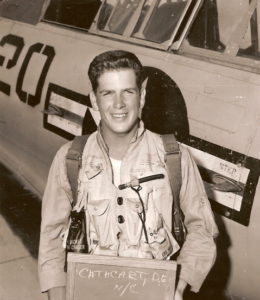
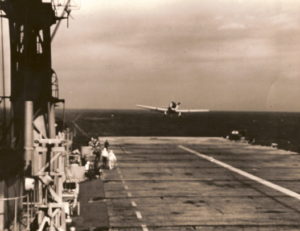
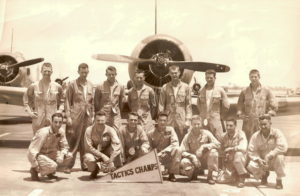
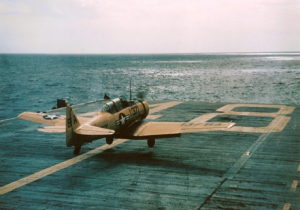
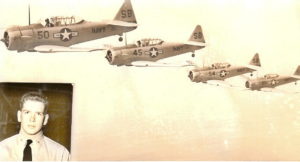
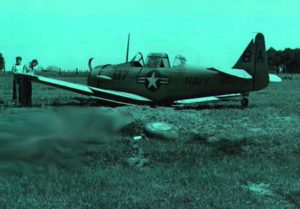
One Response to Bloody Barin – Experiences of Lt. Commander D.E. Cathcart – Mid 1950’s